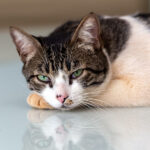Adding a feline friend to your family, especially through adoption or rescue, is a heartwarming experience. However, it often comes with a delightful mystery: what breed of cat is gracing your home with its presence? While purchasing a kitten from a breeder or pet store provides a clear answer to their lineage, cats adopted from shelters or found as strays present a more intriguing puzzle. You might be looking at a unique mix of breeds, each contributing to your cat’s charming individuality. Even if you suspect your cat is purebred, pinpointing the exact breed can be surprisingly difficult, as individual variations exist within every breed.
Fortunately, you’ve landed on a helpful guide designed to assist you in unraveling this feline enigma. This article will walk you through the key characteristics and traits to observe in your cat, empowering you to make an educated guess about their breed without immediately resorting to genetic testing.
While the sheer number of recognized cat breeds – over 70 according to The International Cat Association[1] – makes it impossible to detail each one, we can utilize a category-based approach to narrow down your search. This guide is designed to help you answer the common question, “What Breed Of Cat Do I Have?” By carefully noting your cat’s physical attributes and behavioral tendencies, you can develop a targeted search query and potentially unlock the secrets of your beloved companion’s ancestry.
Identifying Your Cat’s Breed: Key Characteristics to Look For
To begin your breed identification journey, pay close attention to the unique physical and behavioral traits that define your feline friend. Our guide will explore the following categories, each offering valuable clues to your cat’s lineage:
- Size and Weight
- Face Shape
- Ears
- Eyes
- Coat
- Tail
- Behavior
By systematically examining these characteristics, you’ll gather the necessary information to start piecing together the puzzle of your cat’s breed.
Size and Weight: Is Your Cat Large, Medium, or Small?
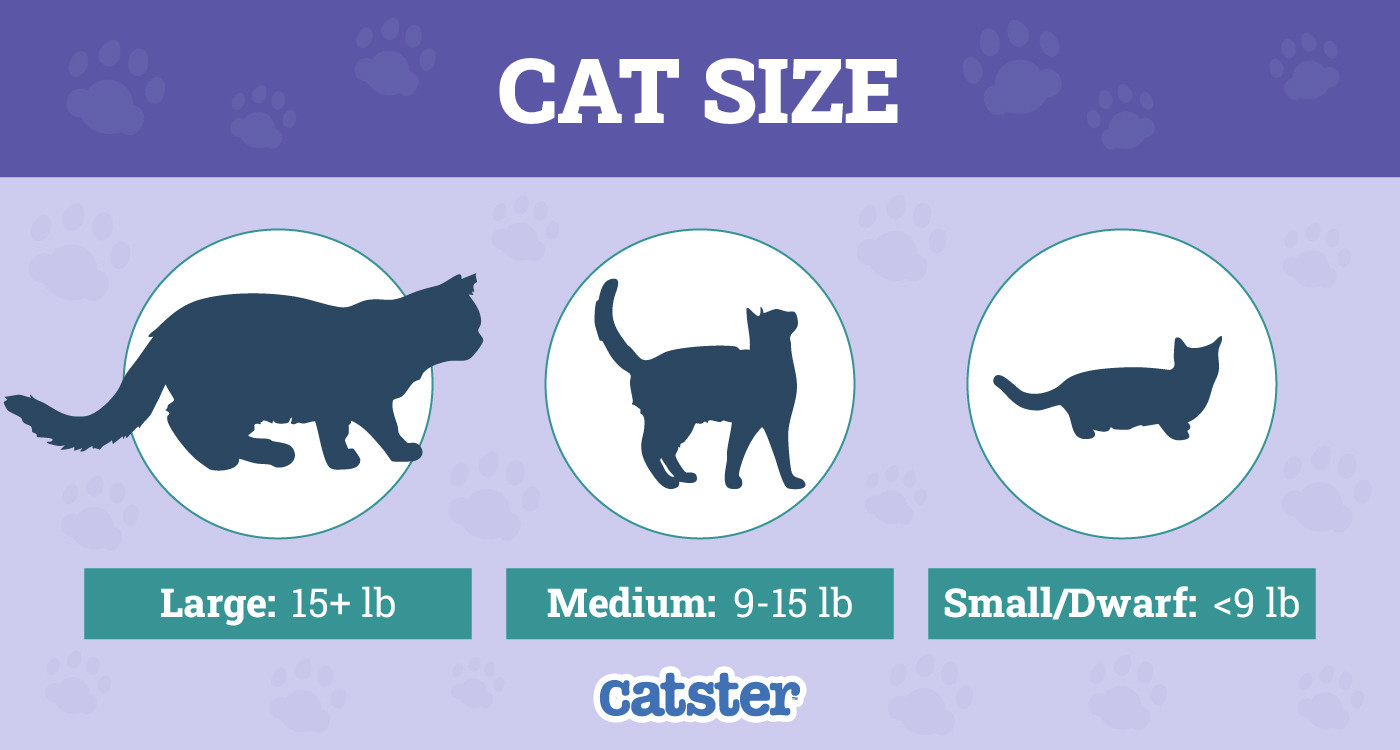 Comparison of cat sizes
Comparison of cat sizes
Size and weight are fundamental indicators in breed identification. Cats exhibit a remarkable range in size, from petite dwarf breeds weighing as little as 4 pounds to imposing giants like the Maine Coon, which can often exceed 25 pounds. Categorizing your cat by size can significantly narrow down the possibilities, as specific breeds tend to fall within defined size ranges.
1. Large Cats (Over 15 lbs)
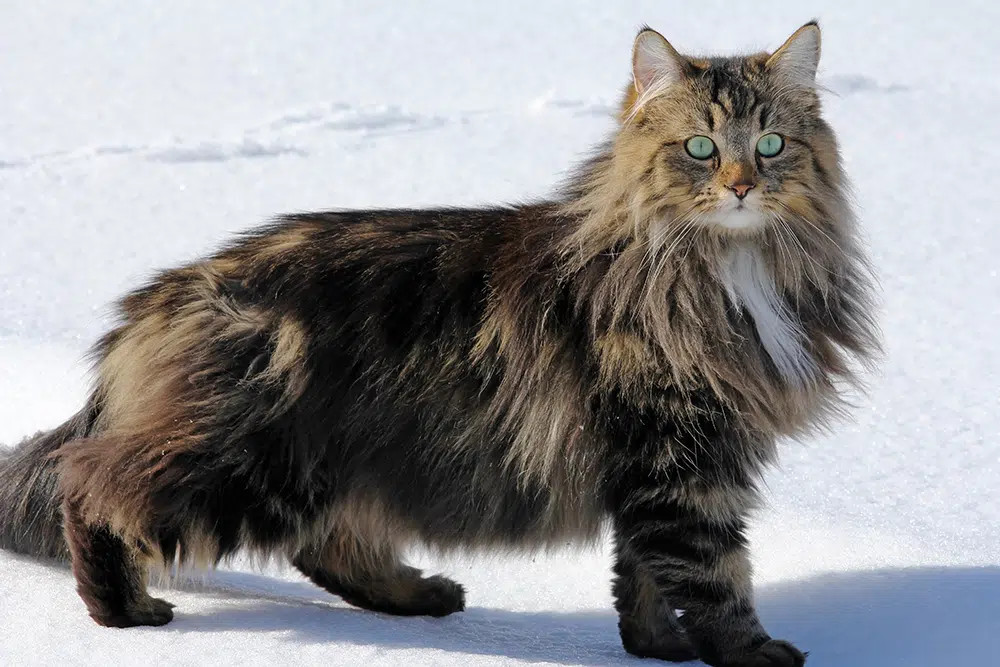 norwegian forest cat standing in the snow
norwegian forest cat standing in the snow
Cats tipping the scales at over 15 pounds are generally classified as large breeds. While some may reach weights exceeding 30 pounds, it’s worth noting that some large cats can be lighter, around 12 pounds, blurring the lines with medium-sized breeds. However, true large breeds are not just heavy; they are also substantially longer and taller than average felines.
Large cats typically stand over 8 inches tall, often reaching heights of 16 inches or more. Their length can range from approximately 30 inches to a record-breaking 47.2 inches.[2] If your cat fits these dimensions, you’re likely dealing with a large breed. Given the limited number of breeds that attain this size, identification becomes considerably easier.
Large cat breeds:
- Maine Coon
- Norwegian Forest Cat
- Ragdoll
- Siberian
- Turkish Van
2. Medium-Sized Cats (9-12 lbs)
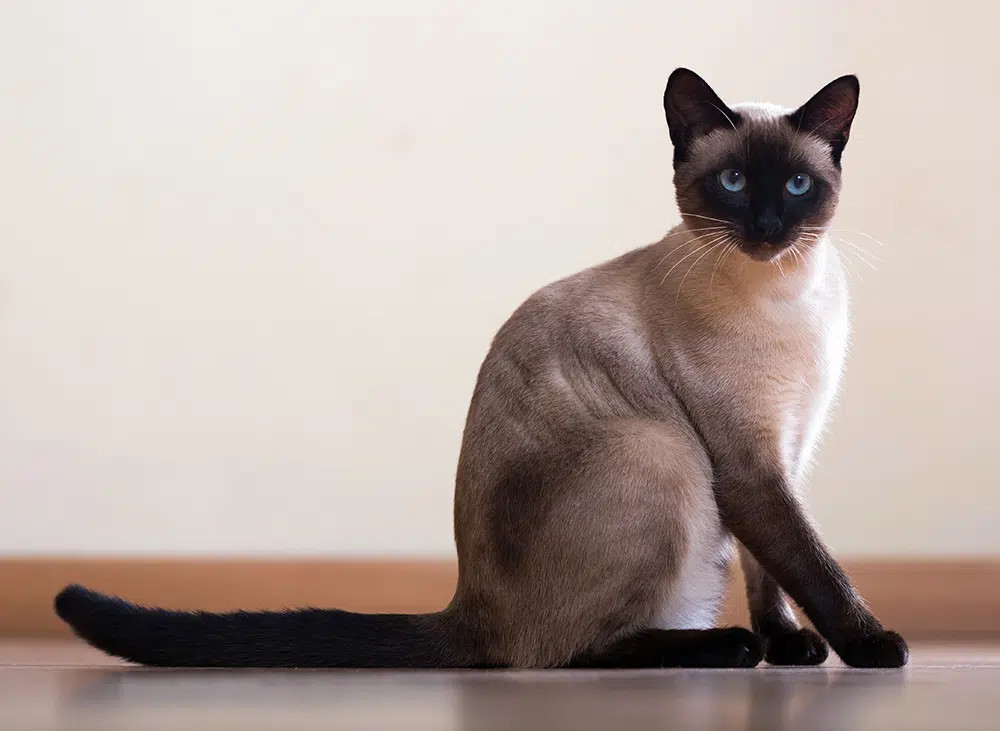 siamese cat sitting on the floor indoor
siamese cat sitting on the floor indoor
The majority of cat breeds fall into the medium-sized category, making it a broad classification. While size alone may not definitively pinpoint the breed, it serves as a contributing factor when combined with other traits.
Medium-sized cats typically weigh between 9 and 12 pounds. Heavier cats are more likely to be large breeds, while lighter felines might belong to smaller or dwarf breeds.
Medium cat breeds:
- American Shorthair
- Bengal
- British Shorthair
- Burmese
- Egyptian Mau
- European Shorthair
- Japanese Bobtail
- Ocicat
- Russian Blue
- Siamese
- Tonkinese
3. Small or Dwarf Cats (Under 9 lbs)
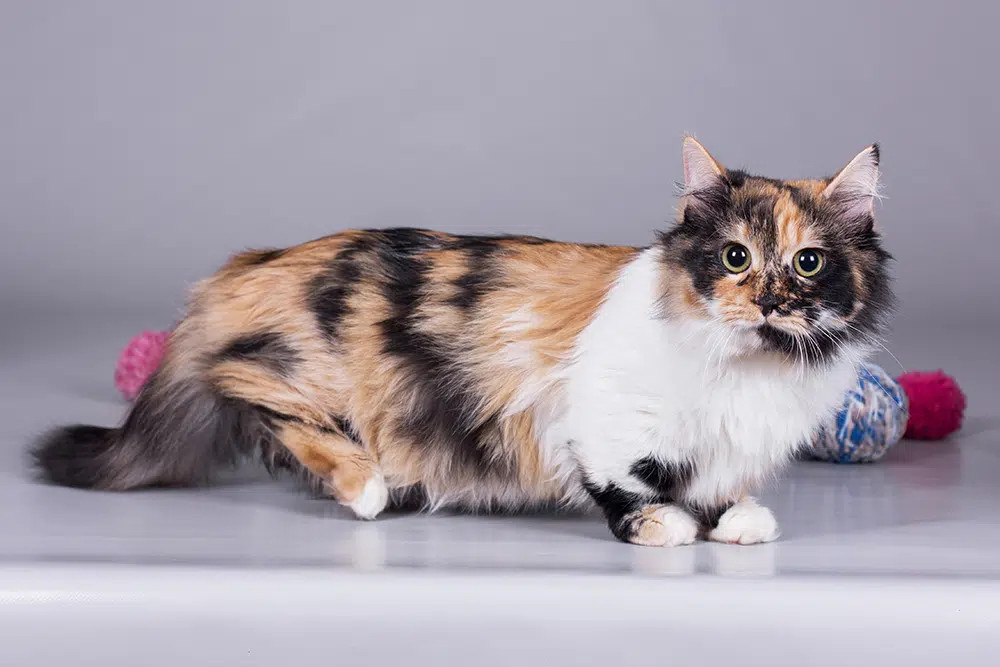 calico munchkin cat
calico munchkin cat
If your fully grown cat weighs less than 9 pounds and appears notably small, you probably have a small or dwarf breed. These smaller felines are generally easier to identify due to the limited number of dwarf breeds. Munchkins are the most recognizable dwarf cats, and many other dwarf breeds share Munchkin genetics.
Small or dwarf cat breeds:
- Munchkin
- American Curl (some lines)
- Cornish Rex (smaller builds)
- Devon Rex (smaller builds)
- Singapura
Face Shape: Round, Flat, or Narrow?
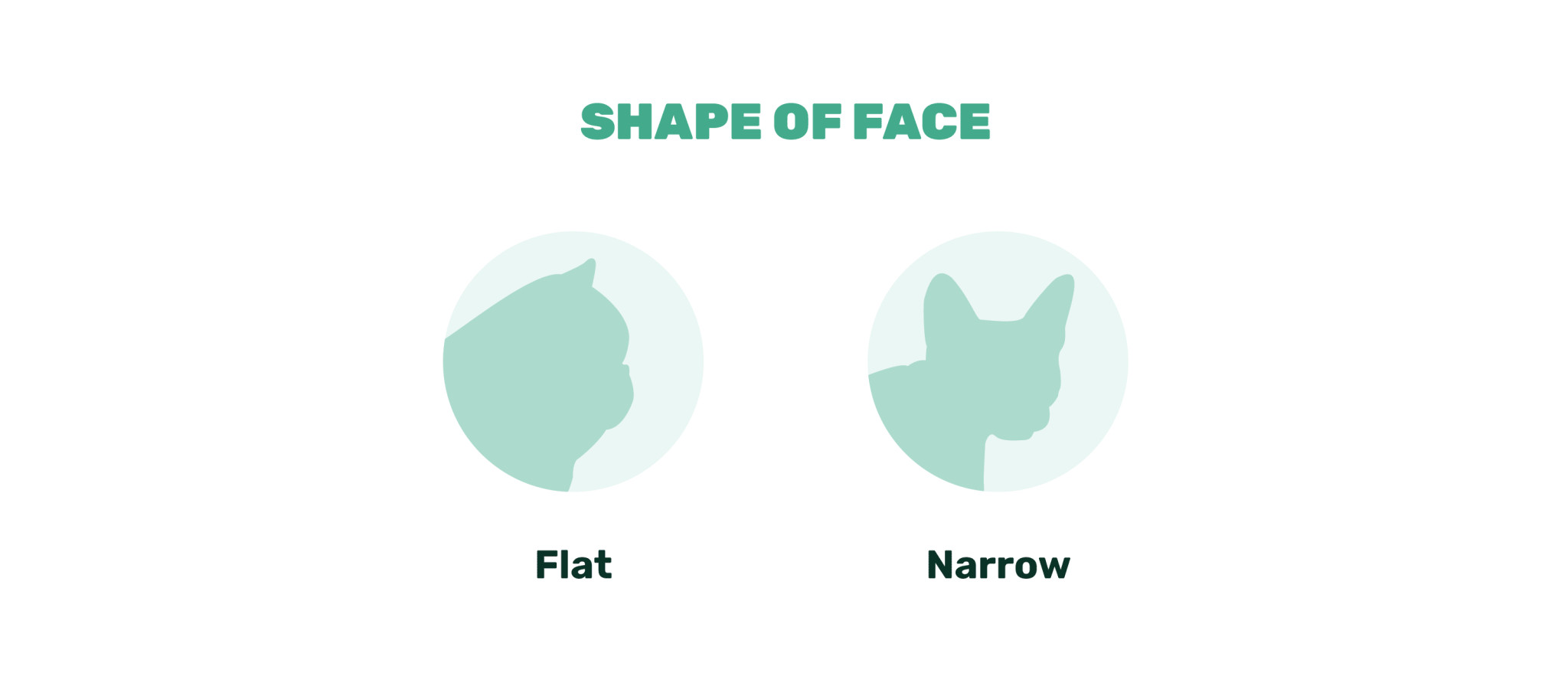 cat face shape
cat face shape
While not every cat’s face shape provides immediate breed identification, certain distinct shapes can significantly narrow down the possibilities. Cats exhibiting specific face shapes can often be categorized into smaller groups, making breed association more straightforward.
1. Round and Flat-Faced Cats
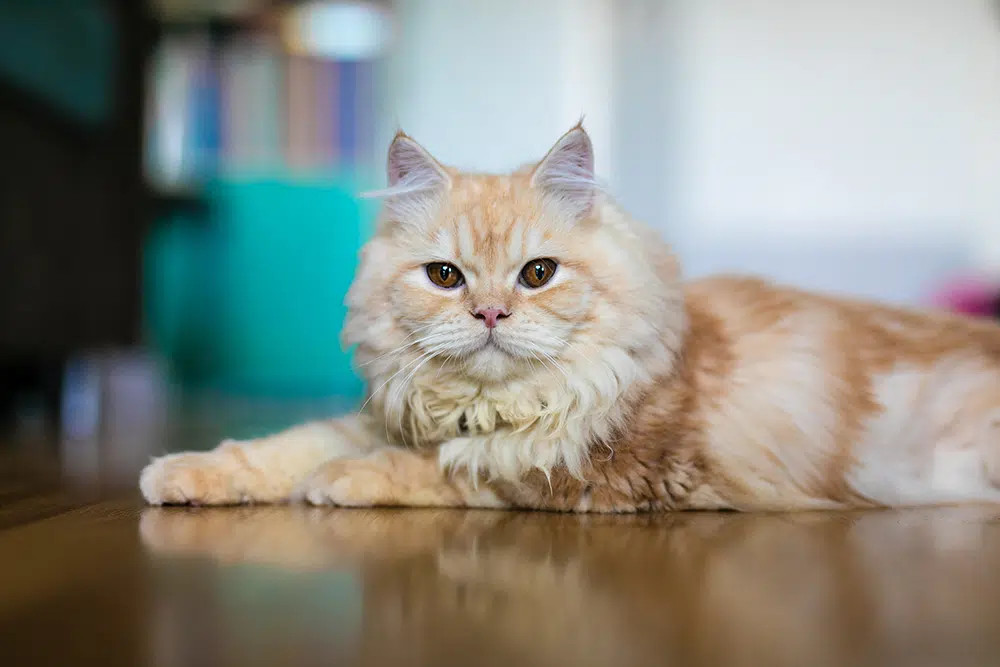 ginger persian cat lying on the floor
ginger persian cat lying on the floor
Some cat breeds possess flat faces, appearing almost pressed inwards from the front. These are known as brachycephalic breeds, characterized by shorter skulls compared to typical breeds. In some breeds like Persians, this flat-faced trait is desirable and helps distinguish them.
However, brachycephalic breeds are prone to certain health issues due to their unique anatomy.[3]
Brachycephalic breed health issues:
- Birthing complications
- Vision problems
- Dental problems
- Respiratory infections
- Breathing difficulties
Fortunately, flat-faced cats are relatively uncommon, making breed identification easier if your cat exhibits this trait.
Round or flat-faced cat breeds:
- Persian
- Exotic Shorthair
- Himalayan
- Burmese (rounder face)
2. Narrow-Faced Cats
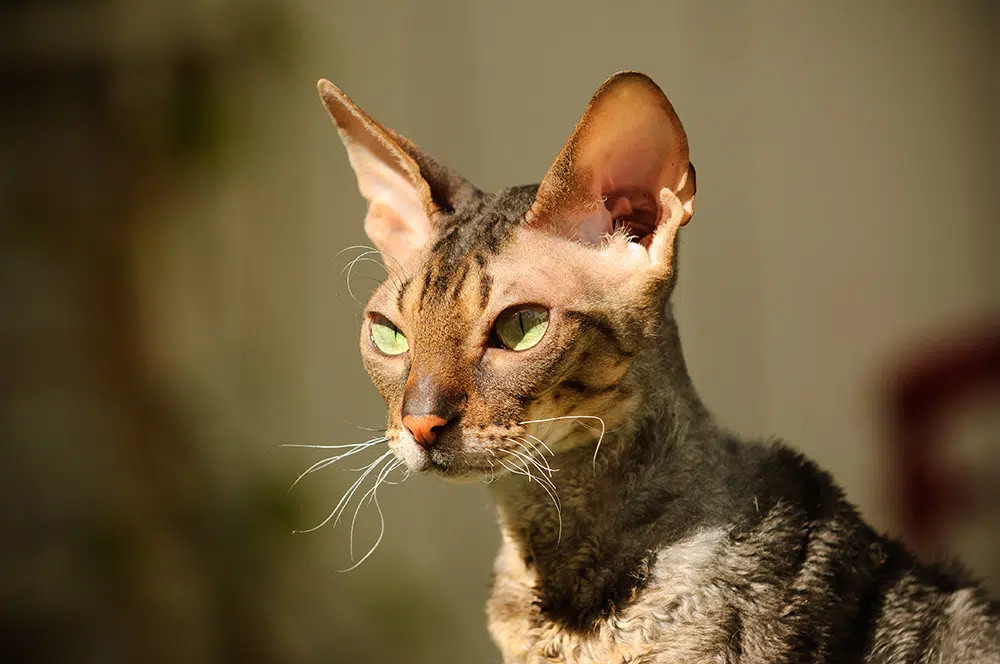 close up Cornish Rex cat
close up Cornish Rex cat
In contrast to flat-faced cats, narrow-faced breeds have triangular, almost pointed facial structures. Narrow-faced cats are even less common than their flat-faced counterparts.
Narrow faced cat breeds:
- Abyssinian
- Cornish Rex
- Devon Rex
- Oriental Shorthair
- Siamese
- Sphynx
Ears: Shape and Features
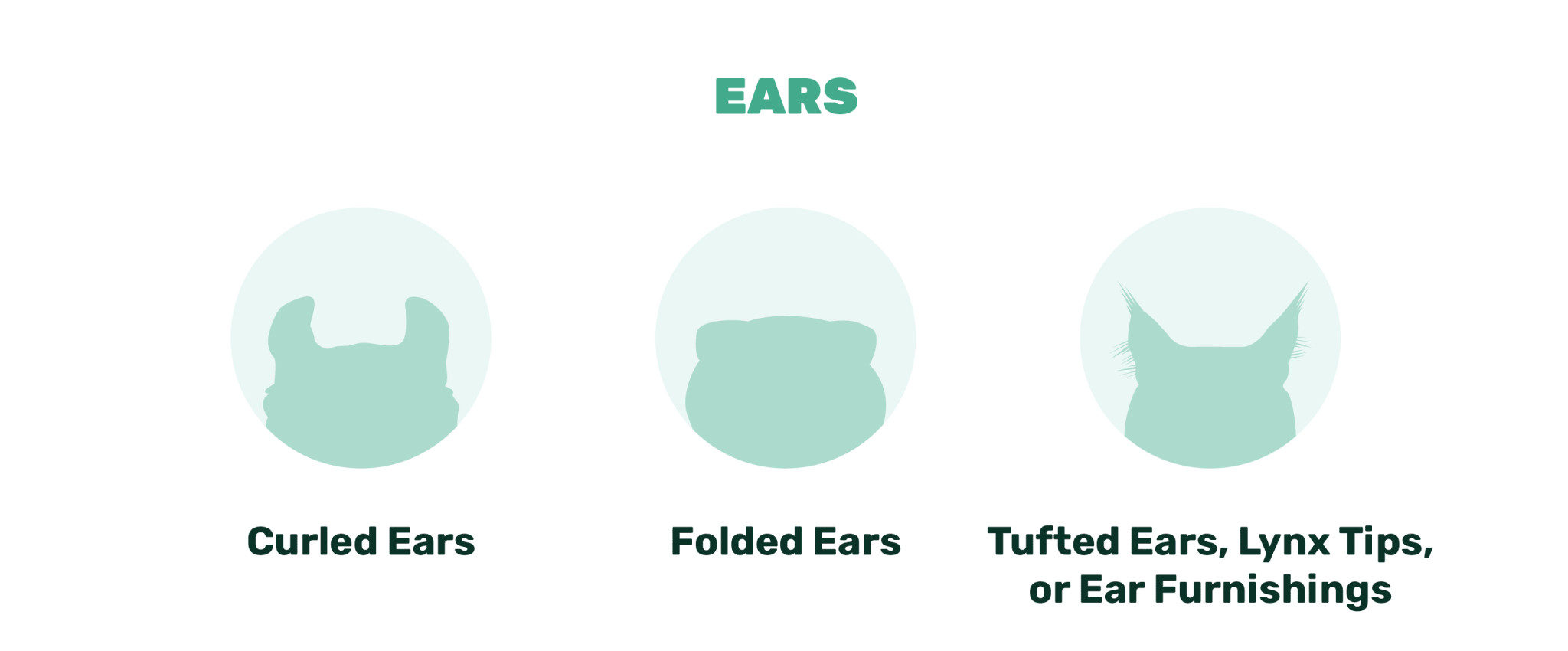 cat ears
cat ears
The shape of your cat’s ears can be a strong indicator of their genetic makeup, especially if they possess unusual ear shapes. Folded or curled ears, for instance, are unique to only a few breeds, making them easily identifiable. These distinctive ear shapes are often the result of genetic mutations that have become defining characteristics of specific breeds.
1. Curled Ears
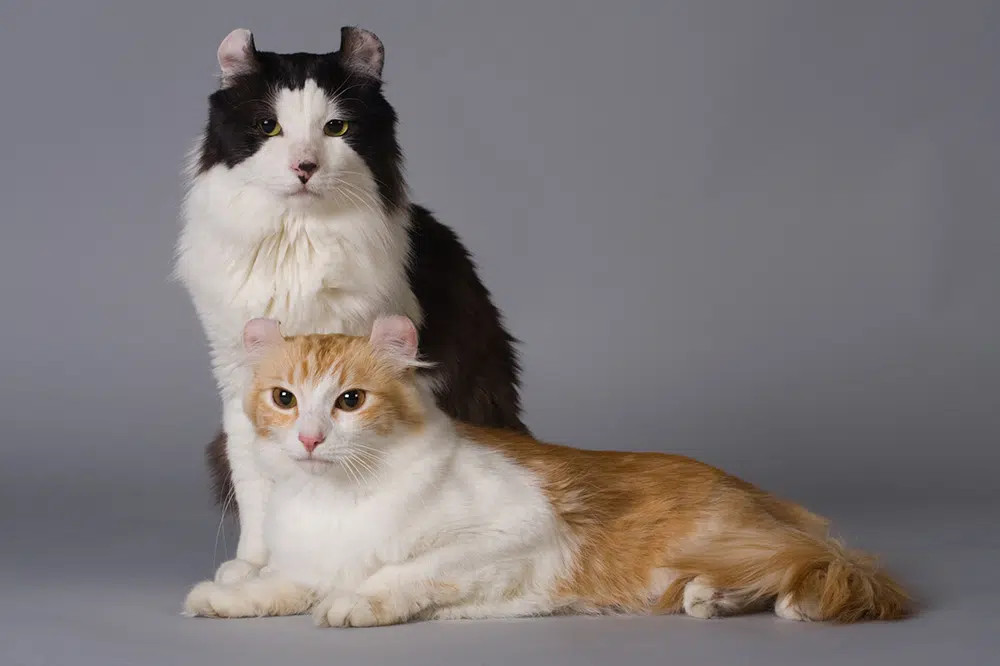 two american curl cats in the studio
two american curl cats in the studio
Curled ears are characterized by an arch shape, curling backward and upward, resembling small horns.
Cat breeds with curled ears:
- American Curl
2. Folded Ears
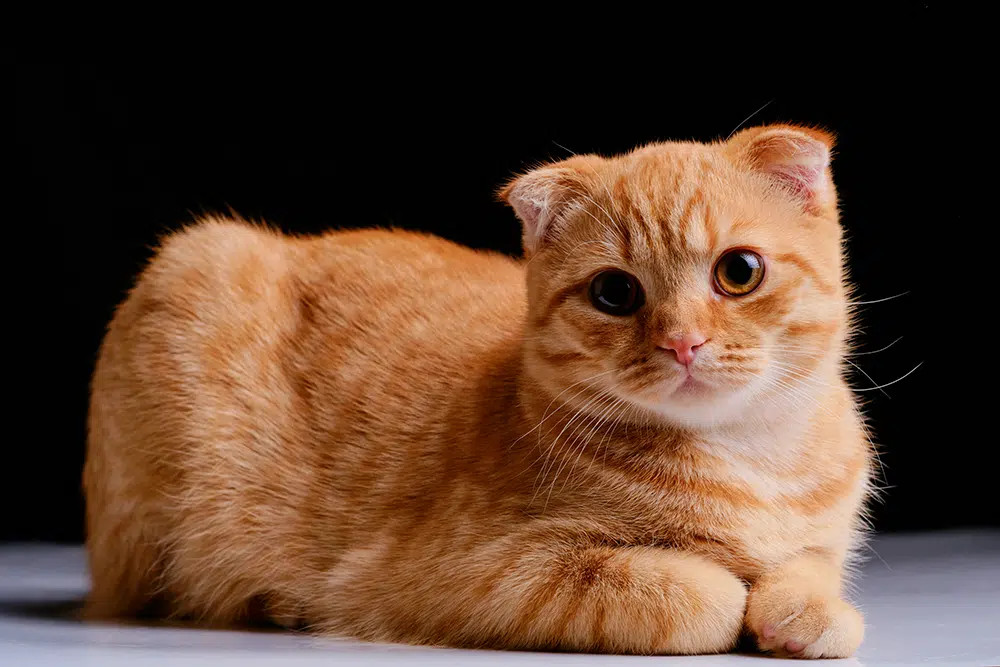 red Scottish fold cat
red Scottish fold cat
While sometimes grouped with curled-ear cats, folded ears are distinct. A key difference is that curled ears are generally associated with healthy breeds, whereas folded ears arise from a genetic mutation that can lead to health problems.[4] This mutation, responsible for the folded ear shape, affects cartilage throughout the body and can cause deformities, arthritis, deafness, and infections.
Cat breeds with folded ears:
- Scottish Fold
3. Tufted Ears, Lynx Tips, or Ear Furnishings
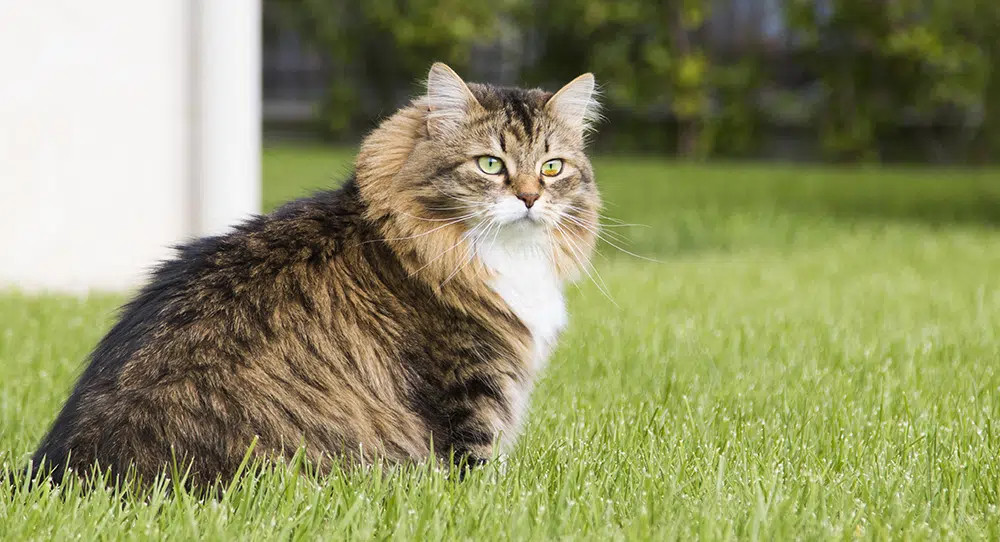 brown tabby siberian cat sitting on the grass
brown tabby siberian cat sitting on the grass
Ear tufts, also known as lynx tips, are fur tufts growing from the ear tips. They serve to keep debris out of the ears and aid in sound direction. Ear furnishings are similar hairs growing inside the ears. Several breeds exhibit these ear adornments, which can help narrow down breed identification.
Cat breeds with ear tufts:
- Maine Coon
- Norwegian Forest Cat
- Siberian
- Turkish Van
Eyes: Color and Odd-Eyes
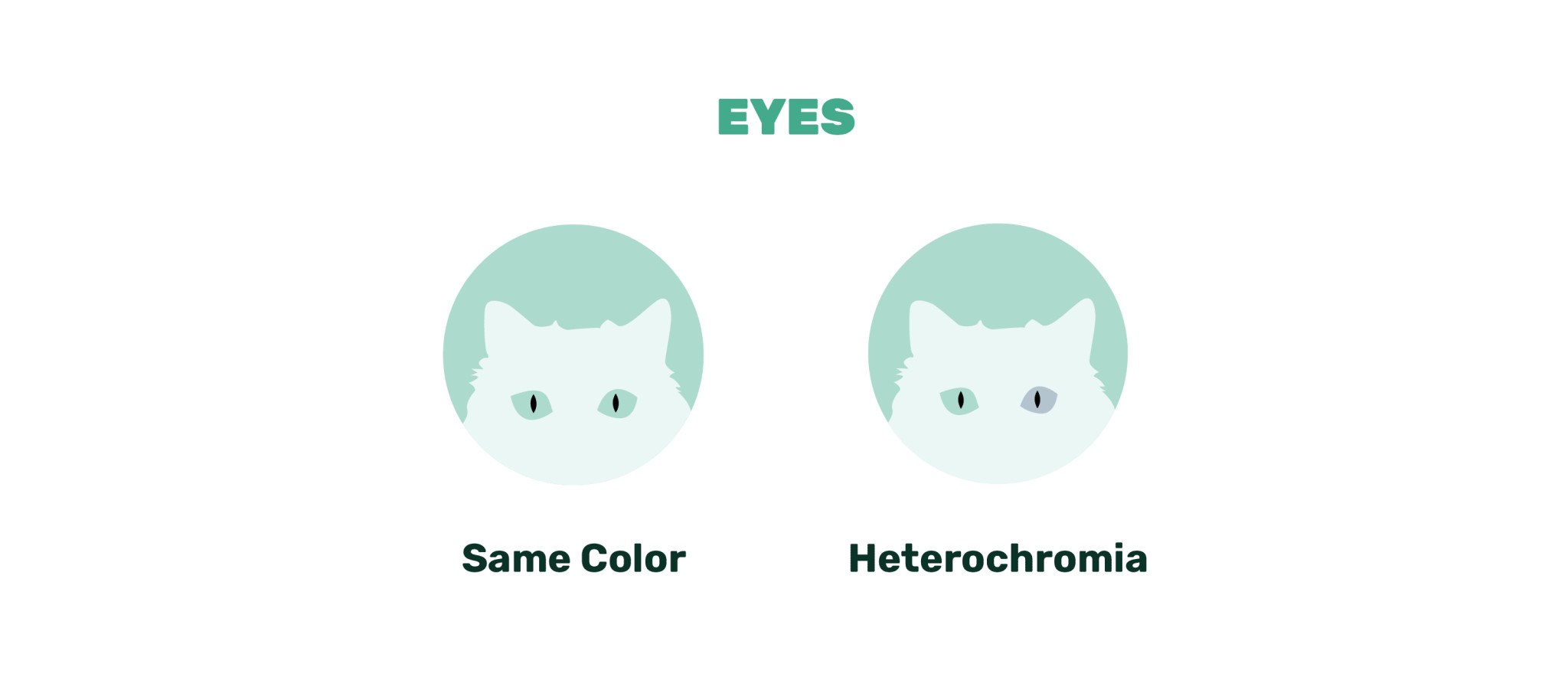 cat eyes
cat eyes
Cats display a captivating array of eye colors, which can provide clues for breed identification.
Common cat eye colors:
- Amber
- Hazel
- Gold
- Green
- Blue
If your cat has consistently colored eyes, it might not offer significant breed-specific information. However, some cats exhibit heterochromia, a condition where the eyes are different colors. This “odd-eyed” trait is a genetic anomaly linked to white dominant and white spotting genes and is observed in certain breeds.
Cat breeds with rare eye colors (including heterochromia):
- Turkish Van
- Turkish Angora
- Japanese Bobtail
- Sphynx (occasionally)
Coat: Length, Texture, and Patterns
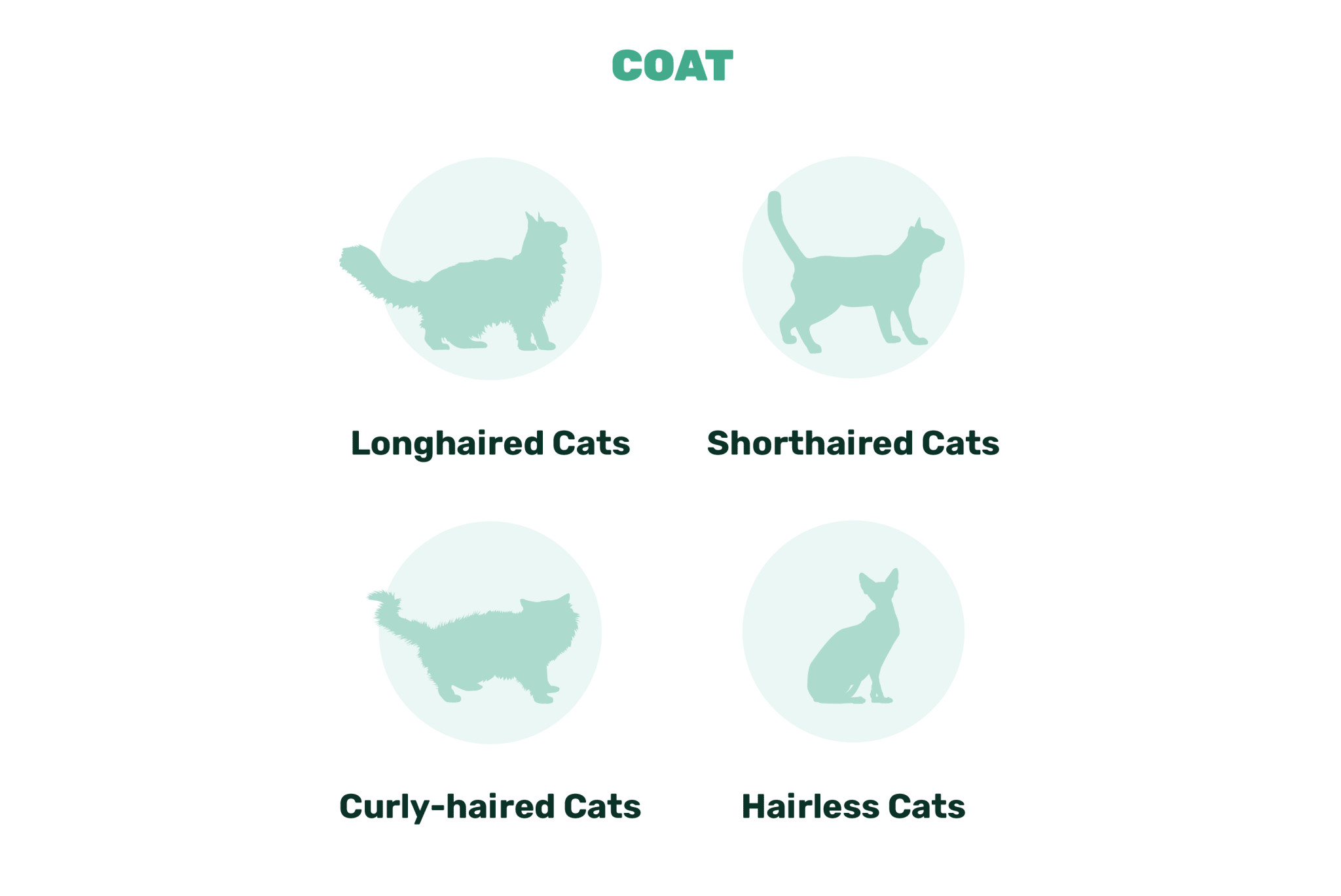 cat coats
cat coats
A cat’s coat is another valuable indicator of breed. Coat types vary significantly, including long hair, short hair, hairless, and curly hair. Many breeds are renowned for specific coat types, sometimes even named after their distinctive coats. Identifying your cat’s coat type can significantly simplify breed identification.
1. Longhaired Cats
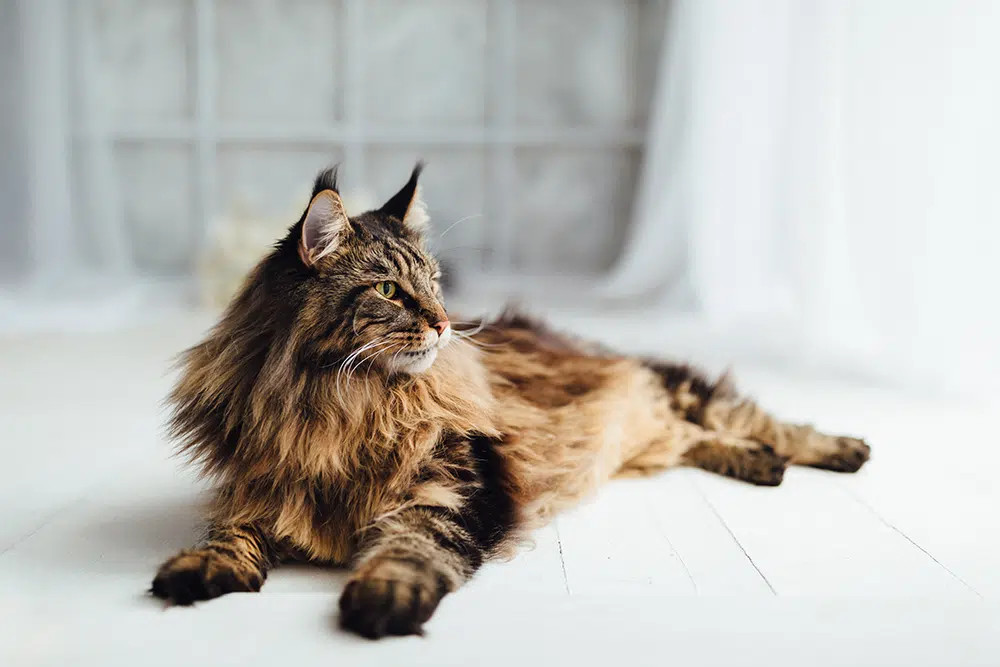 smoked longhaired Maine Coon cat lying indoor
smoked longhaired Maine Coon cat lying indoor
Longhaired cats possess luxurious, flowing coats that can make them appear larger than they are. These breeds have thick fur and typically shed considerably.
Long-haired cat breeds:
- Maine Coon
- Persian
- Ragdoll
- Norwegian Forest Cat
- Siberian
- Turkish Angora
- Himalayan
- Birman
2. Shorthaired Cats
In contrast to longhaired cats, shorthaired breeds have fur that is short and close-lying to the body. They require less grooming and their coats are generally easier to maintain.
Short-haired cat breeds:
- American Shorthair
- British Shorthair
- Siamese
- Russian Blue
- Bengal
- Abyssinian
- Burmese
- Egyptian Mau
- Manx
- Sphynx
- Cornish Rex
- Devon Rex
- Oriental Shorthair
3. Curly-Haired Cats
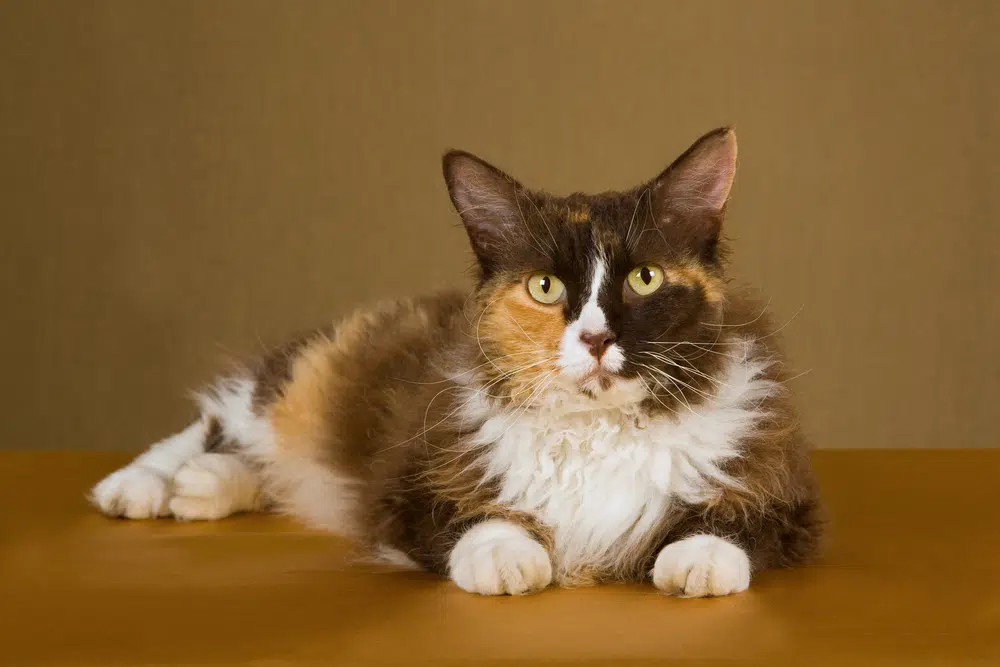 LaPerm tri-colored cat
LaPerm tri-colored cat
As the name suggests, curly-haired cats have distinctive curly coats. These coats can be more prone to tangling than straight coats and require regular maintenance. Curly hair can occur in both long and short coats, so a curly-haired cat can also be classified as longhaired or shorthaired.
Curly-haired cat breeds:
- Cornish Rex
- Devon Rex
- LaPerm
- Selkirk Rex
4. Hairless Cats
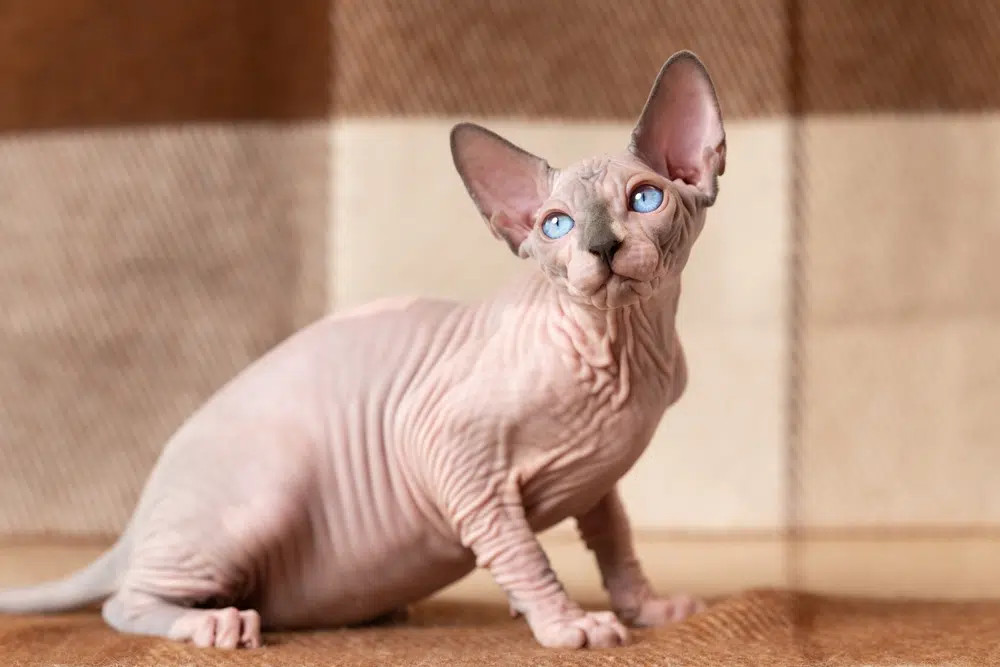 Sphynx cat sitting on a blanket and looking away
Sphynx cat sitting on a blanket and looking away
Hairless cats have a striking and unique appearance, easily identified by their lack of fur. Famously exemplified by Mr. Bigglesworth from the Austin Powers movies, these cats are popular among allergy sufferers. The limited number of hairless breeds makes identification relatively straightforward.
Hairless cat breeds:
- Sphynx
- Donskoy
- Peterbald
Colors, Patterns, and Markings: Beyond Basic Colors
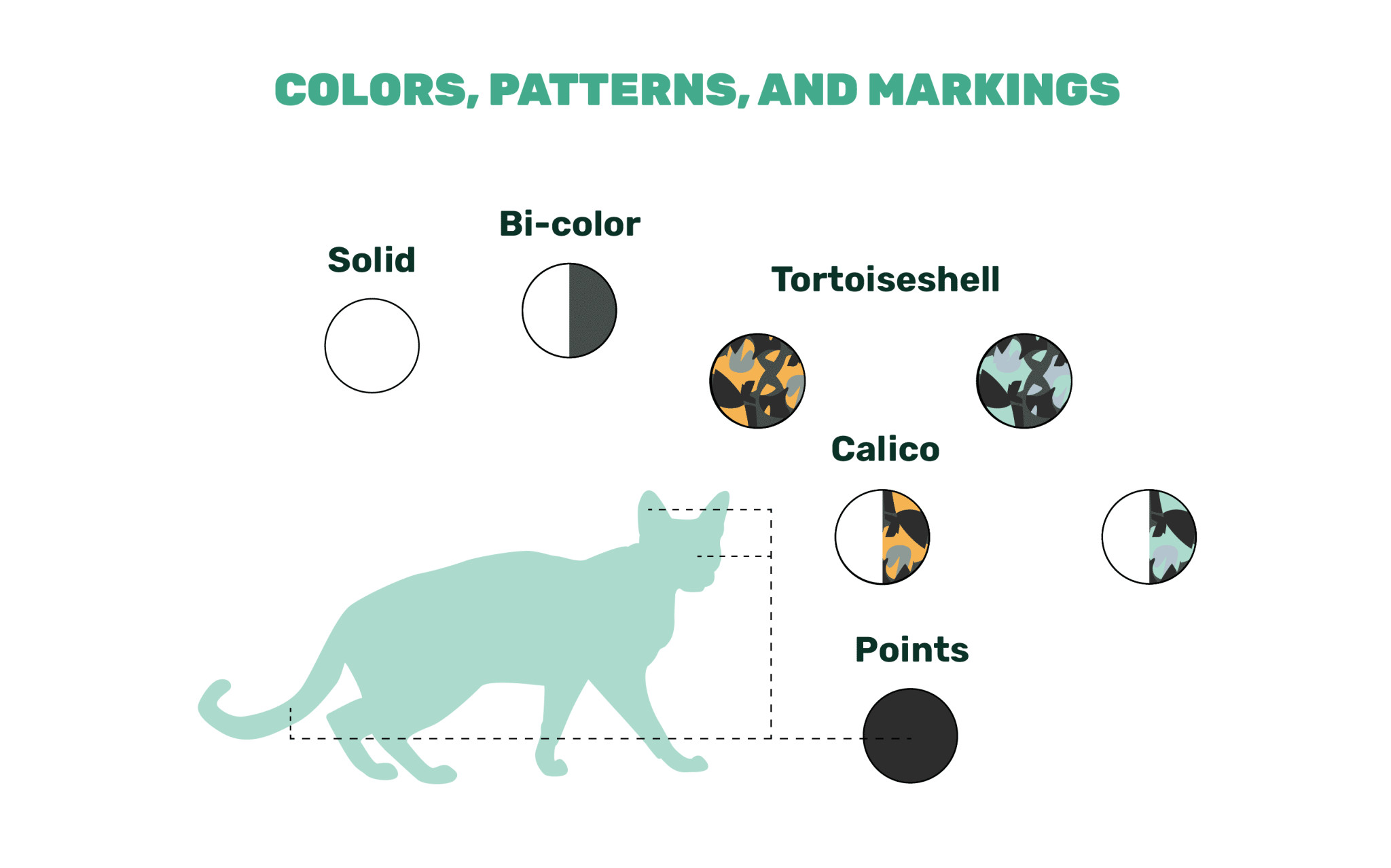 cat colors patterns markings
cat colors patterns markings
While coat color alone may not instantly reveal breed, certain colors, patterns, and markings are associated with specific breeds, adding another piece to the breed identification puzzle.
1. Solid Color
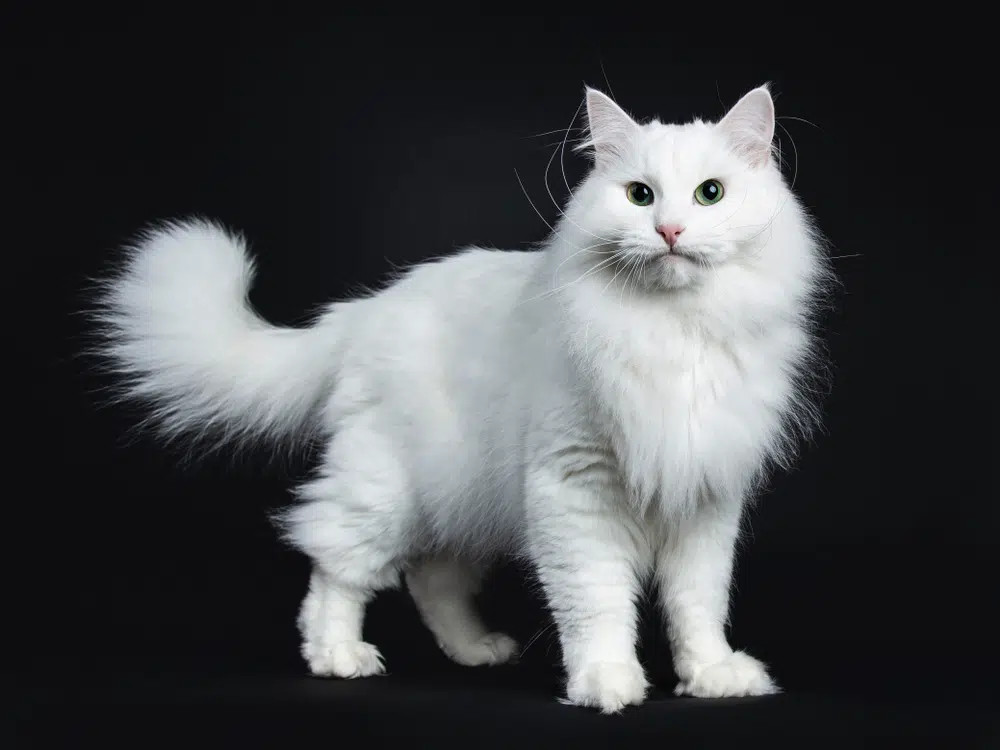 Pure white siberian cat
Pure white siberian cat
Solid-colored cats display a single, uniform color throughout their coat. These can range across a spectrum of colors, including black, white, brown, red, and more.
2. Bi-Color (Piebald)
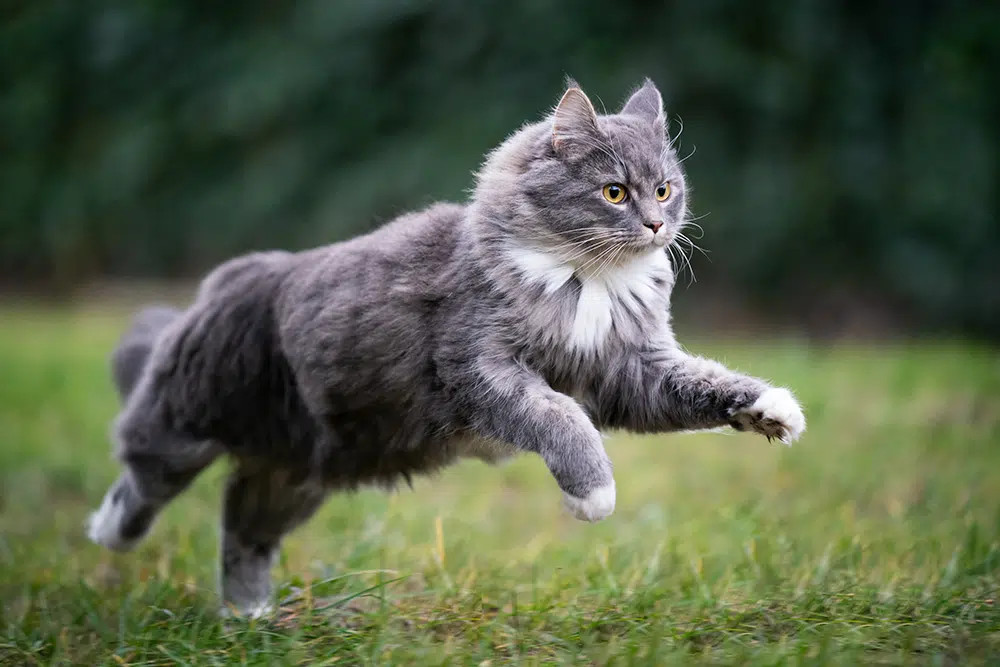 blue tabby maine coon cat running fast
blue tabby maine coon cat running fast
Bi-colored cats, also known as piebald, exhibit two colors. Typically, one color is a base color, and the second is white, which can range from minimal patches to covering the majority of the coat.
Common bi-color patterns:
- Tuxedo (black and white)
- Van pattern (color only on head and tail)
- Harlequin (random patches of color on white)
3. Tortoiseshell
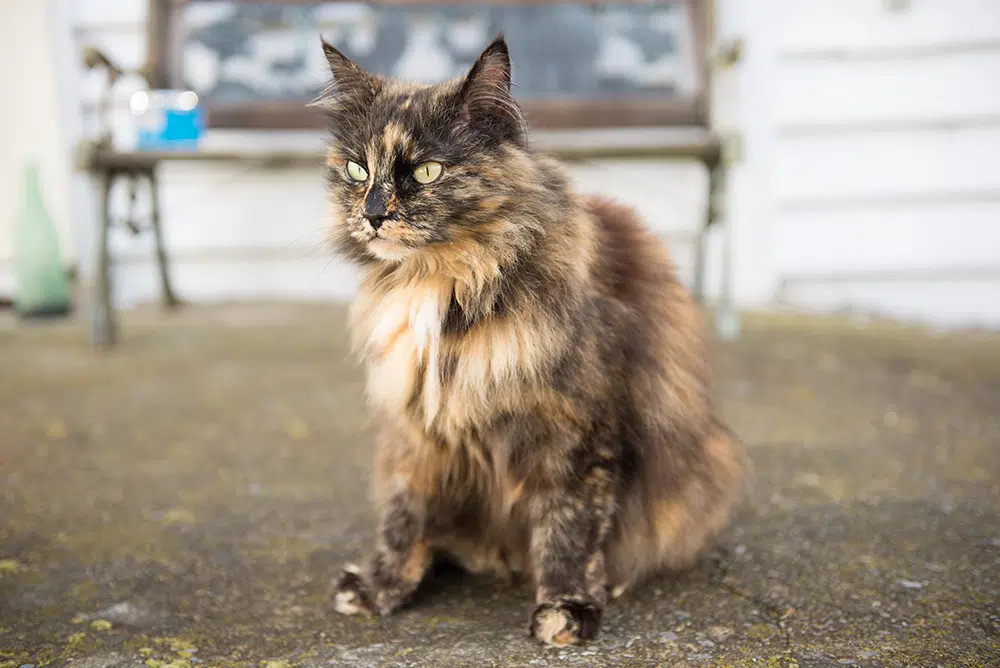 tortoiseshell Norwegian forest cat sitting
tortoiseshell Norwegian forest cat sitting
Tortoiseshell cats resemble bi-colored cats but lack white in their coats. Instead, they have a base color with patches of a secondary color intermingled. The most common tortoiseshell colors are orange and black, but variations include blue, chocolate, red, yellow, and cream. Tortoiseshell patterns can occur in both purebred and mixed-breed cats.
4. Calico
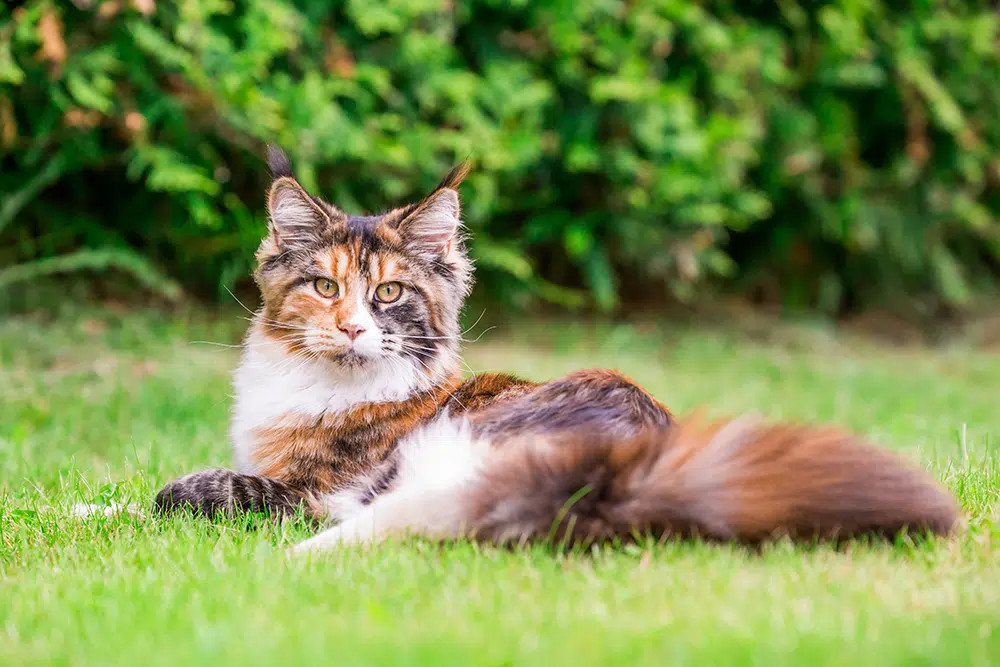 calico maine coon cat lying on the grass
calico maine coon cat lying on the grass
Calico cats have tri-colored coats consisting of white plus two other colors. While the other two colors can vary, almost all calico cats are female. Male calico cats are rare (approximately 1 in 3,000) and typically sterile.
5. Points (Colorpoints)
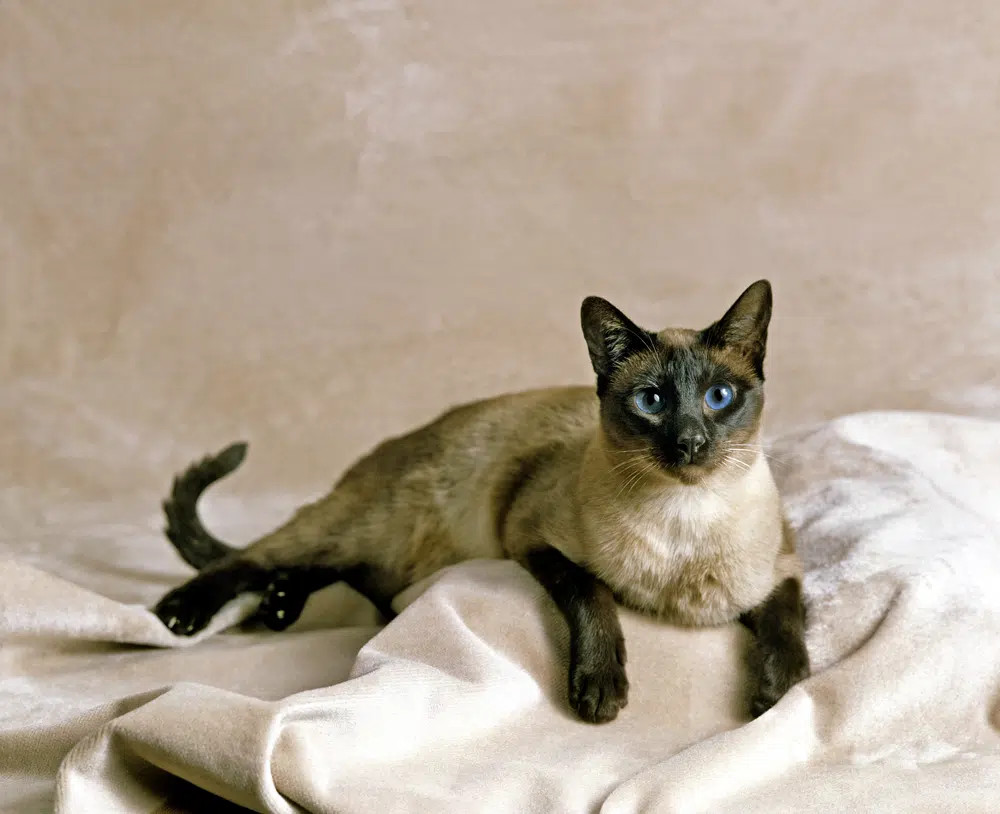 Seal point siamese domestic cat
Seal point siamese domestic cat
“Pointed” cats, also known as colorpoints, have darker coloration on their face, paws, ears, and tail, contrasting with a lighter base coat. Points can appear in various colors, as can the base coat. Not all breeds exhibit pointed patterns.
Color-pointed cat breeds:
- Siamese
- Himalayan
- Birman
- Ragdoll
- Tonkinese
Tail: Length and Shape
 cat tail
cat tail
While tail variations are not as diverse as other traits, tail length can be a significant clue in breed identification.
1. Short Tails
Short tails, significantly shorter than average, are a distinctive feature that can quickly narrow down breed possibilities. Several breeds are named after this characteristic due to its rarity. These short tails are natural and not the result of docking or injury.
Short tailed cat breeds:
- Manx
- Japanese Bobtail
- American Bobtail
- Kurilian Bobtail
Behavior: Temperament and Quirks
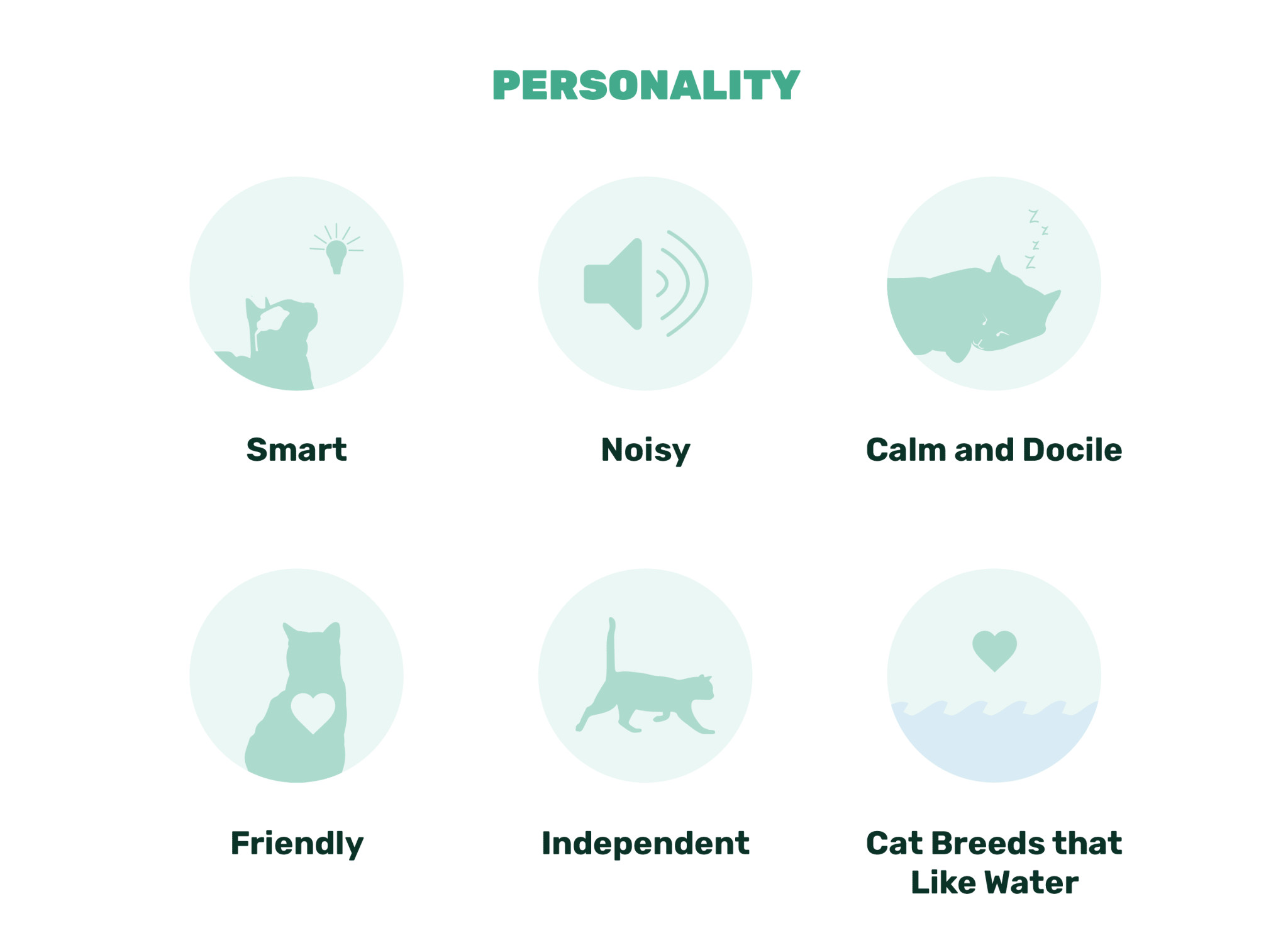 cat personalities
cat personalities
While individual personalities exist within every breed, certain behavioral traits and temperaments are more common in specific breeds. Observing your cat’s personality can provide valuable clues about their potential breed ancestry.
1. Smart Cat Breeds
 ginger persian cat lying on the floor
ginger persian cat lying on the floor
Cats are generally considered intelligent animals, but some breeds are notably smarter and more trainable than others.
Intelligent cat breeds:
- Abyssinian
- Siamese
- Bengal
- Cornish Rex
- Scottish Fold
- Singapura
2. Noisy Cat Breeds (Vocal)
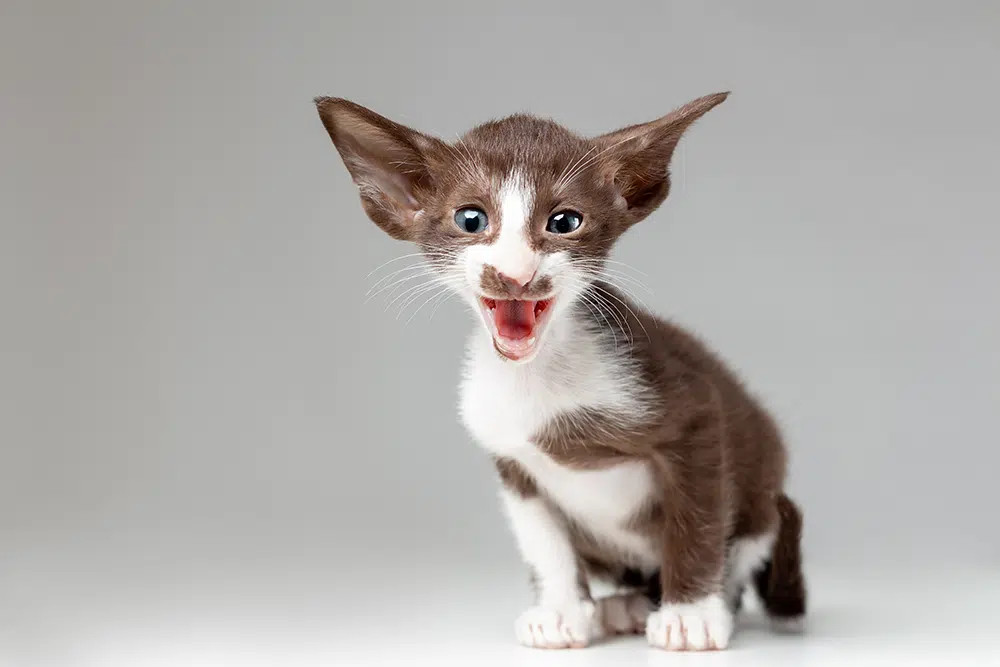 bicolor oriental cat kitten
bicolor oriental cat kitten
Many cats are quiet and reserved, but some breeds are exceptionally vocal,[5] enjoying purring, meowing, and “chatting” with their owners. Vocalization is a trait more prevalent in certain breeds.
Vocal cat breeds:
- Siamese
- Oriental Shorthair
- Burmese
- Tonkinese
3. Calm and Docile Cat Breeds
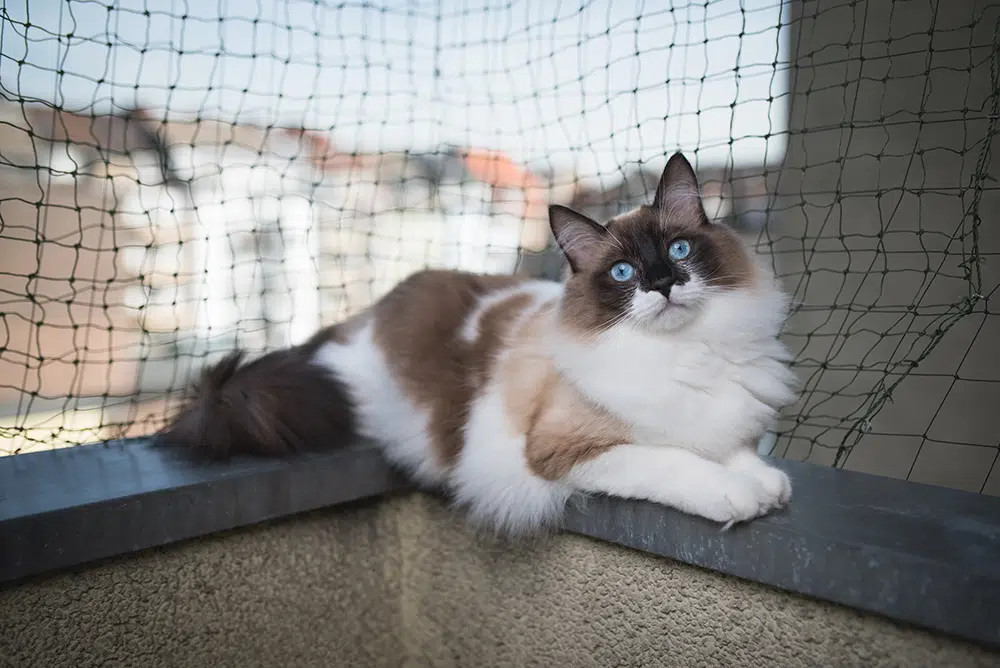 ragdoll cat lying in the edge of the balcony corner
ragdoll cat lying in the edge of the balcony corner
As natural predators, many cats are active and energetic. Breeds known for being quiet, reserved, and docile are less common and therefore easier to identify.
Docile cat breeds:
- Ragdoll
- Persian
- British Shorthair
- Scottish Fold
4. Friendly Cat Breeds
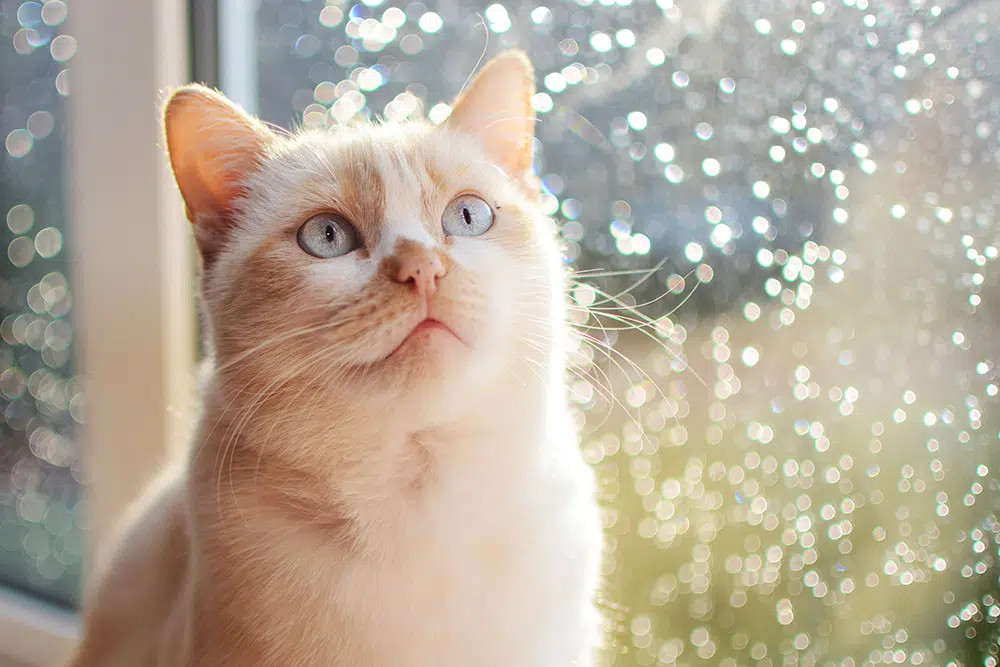 close up ragamuffin beside the window
close up ragamuffin beside the window
Despite the stereotype of aloofness, some cat breeds are known for being exceptionally friendly and outgoing,[6] readily approaching strangers for affection.
Friendly cat breeds:
- Ragdoll
- Ragamuffin
- Maine Coon
- Burmese
5. Independent Cat Breeds
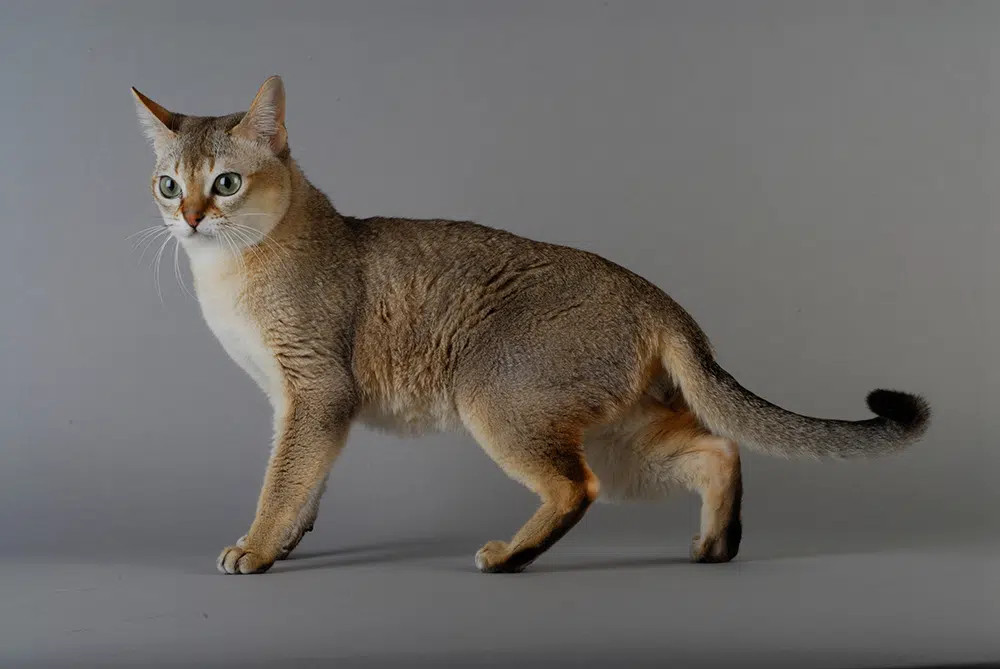 Singapura cat on grey background
Singapura cat on grey background
Independent cat breeds are self-sufficient and may only seek attention on their own terms. These felines often exhibit a confident and self-assured demeanor.[7]
Independent cat breeds:
- Abyssinian
- Bengal
- Russian Blue
- Singapura
6. Cat Breeds That Like Water
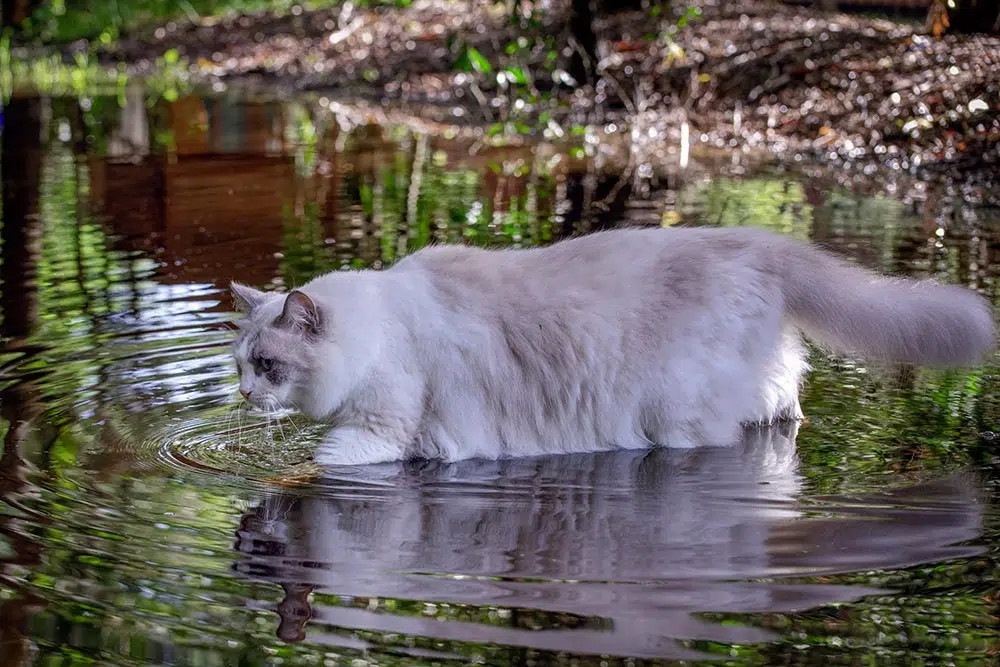 Ragdoll cat walking through water
Ragdoll cat walking through water
Most cats are famously averse to water,[8] but surprisingly, some breeds are known to be attracted to it and may even enjoy playing in water.
Water-loving cat breeds:
- Turkish Van
- Turkish Angora
- Bengal
- Maine Coon (sometimes)
Determining Your Cat’s Breed: Combining the Clues
Pinpointing your cat’s breed can be challenging, but by using the criteria outlined above, you have several approaches to uncover their lineage.
One method is to list the traits your cat exhibits based on the categories we’ve covered and enter them into a search engine.
Example Search Query: Cat breed + calm + large + short fur + tan + colored points
Alternatively, utilize the breed lists provided for each trait. If a specific breed consistently appears across multiple lists corresponding to your cat’s traits, there’s a higher probability that your cat belongs to that breed.
Keep in mind that search results may not be definitive, but they will likely guide you in the right direction. If your cat is a mixed breed, their ancestry may encompass several breeds listed in your search results.
 divider cat paw scratch oct 2024
divider cat paw scratch oct 2024
When to Consider Genetic Testing
Even with careful observation, determining your cat’s breed based solely on physical and behavioral traits is not always conclusive. For 100% certainty, genetic testing is required.
Genetic testing analyzes your cat’s DNA,[9] providing an accurate breakdown of their genetic makeup and identifying the breed or breeds that contribute to their heritage. This is particularly beneficial for mixed-breed cats, whose diverse traits can make visual identification difficult.
Genetic testing offers the most definitive answer to the question “what breed of cat do I have?” and can also reveal valuable insights into your cat’s health, including potential genetic predispositions to certain conditions. Consult your veterinarian for more information on genetic testing options.
Conclusion: Unlocking the Mystery of Your Cat’s Breed
With over 70 officially recognized cat breeds, identifying your cat’s breed can feel like solving a complex puzzle. However, by utilizing the traits and characteristics discussed in this guide, you can gather valuable clues and simplify the process. For cats of a single breed, visual identification is often achievable. Mixed-breed cats present a greater challenge, but even then, careful observation can provide insights into their likely ancestry.
Do your best to use the information you’ve learned to determine your cat’s breed. If uncertainty persists, genetic testing offers a more precise answer. Ultimately, whether purebred or a charming mix, every cat is a unique and wonderful companion deserving of love and appreciation.
Related Reads:
Featured Image Credit: Pixabay
How useful was this post?
Click on a star to rate (you can leave written feedback after clicking submit)
Help us improve Catster for pet parents!
Your feedback really matters.
What did you like about this post? Also how can we improve it?

